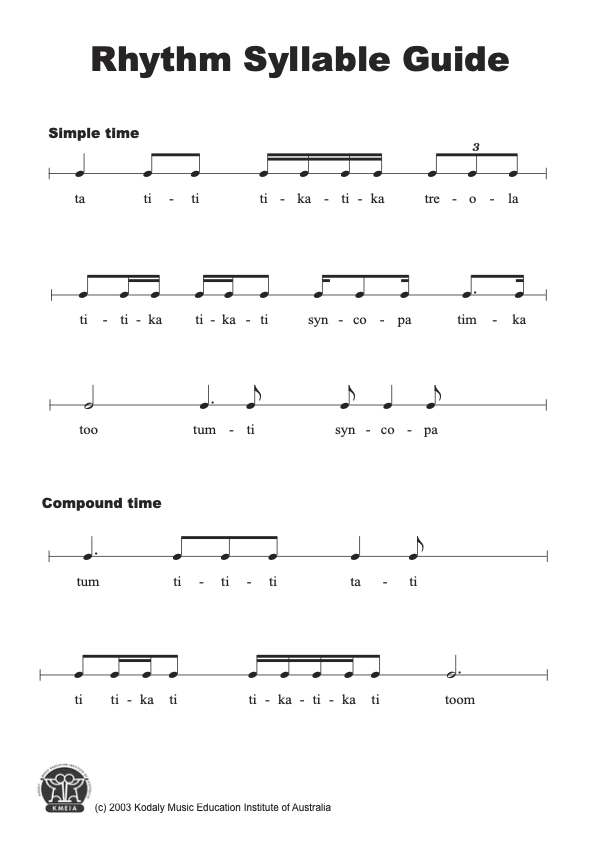by Ashley – Piano Teacher, Brighton
When I was young and learning to play thepiano, rhythm was always my biggest challenge.
I could play by ear, I could mimic, but reading rhythm correctly on the page — really understanding it — felt like a mystery for years.
I wish I’d been introduced to the Kodály Method back then, because it’s truly one of the most powerful and intuitive ways to learn to read rhythm for any student, at any age.
What Is the Kodály Method?
The Kodály Method was developed by Hungarian composer and educator Zoltán Kodály (1882–1967). His vision was that music should be learned the same way we learn language — through sound, movement, imitation, and play, before we ever see notation.
Instead of starting with sheet music and symbols, Kodály students first listen, sing, move, and clap. By internalising rhythm and pitch physically, reading becomes a natural next step rather than a confusing code.

Connecting Movement and Sound
Students often perform rhythms through body movement — stepping the pulse while clapping the rhythm, or tapping one hand while saying the rhythm aloud.
This engages multiple senses and helps the body remember timing patterns physically.
Introducing Rhythm Reading
Once the patterns feel natural, we then introduce notation.
Because students already know what “Ta Ti-Ti Ta” feels and sounds like, they immediately recognise those patterns on the page.
This step eliminates the guesswork that causes so many learners to fall behind when reading.
For piano, this is where it really clicks — the student can see a rhythm, say it confidently, and then play it with both hands.
Why It’s Brilliant for Piano Students
For piano learners, reading rhythm with both hands can feel overwhelming at first.
The Kodály approach breaks this down into clear, physical patterns that make sense instantly:
- 🫰 It’s tactile and physical — you feel rhythm before you play it.
- 🎶 It builds coordination — both sides of the brain are trained together.
- 👂 It develops inner hearing — students can “hear” rhythm before touching the keys.
- 📖 It improves reading confidence — rhythmic decoding becomes second nature.
Why I Teach It (and Why I Wish I’d Learned It Sooner)
When I was growing up, I could play piano pieces but often guessed at the rhythms.
Like many students, I relied too heavily on listening and copying.
If I’d been taught using the Kodály rhythm syllables — clapping, speaking, and moving — I’d have built a much deeper reading foundation.
Now, in my lessons here in Brighton, I use Kodály-based rhythm work with every new student — from young beginners to adults returning to piano after a long break.
It’s amazing how quickly confidence grows once rhythm feels natural.
Final Thoughts
If you or your child struggles to read rhythm — or if you want a more musical, body-based way of learning — the Kodály Method is a game changer.
It doesn’t just teach rhythm; it teaches musical thinking.
You’ll start to understand rhythm as something you can move, sing, and play with freedom.
🎵 Interested in learning more?
Visit ashleypiano.net to book a lesson or learn about piano classes in Brighton and Hove.
I’d love to show you how this method can completely change the way you read and play music.

